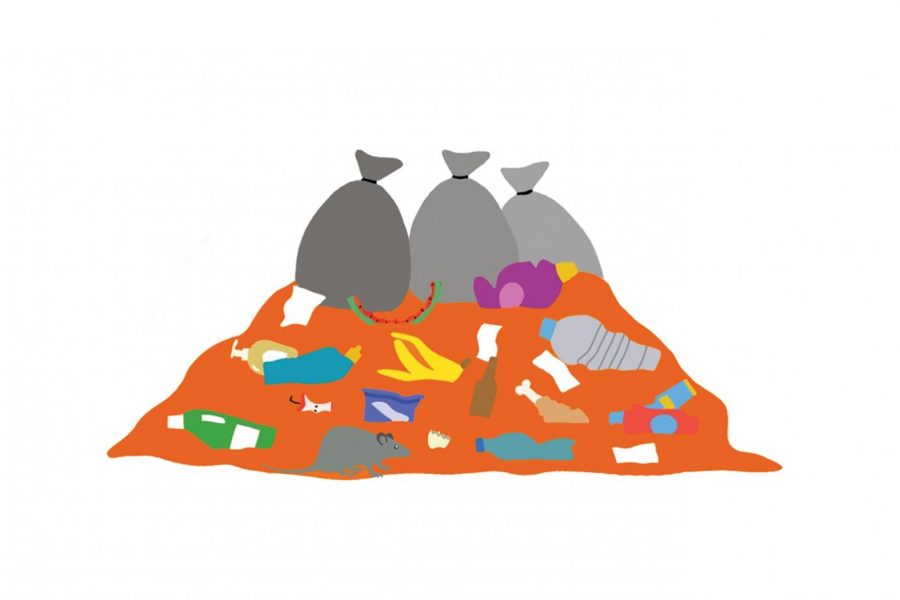Reduce, reuse … recycle?
Sep 18, 2019
Growing up, most of us dream of making some sort of lasting impact on the world. Well, don’t worry, because I’m here to tell you that you already have — and you continue to do so every single day.
Every single day of every single year, nearly every one of the 330 million people living in the United States of America is making a similar impact. So are the majority of other people living in other countries around the world. What kind of an impact, you may ask? Trash. Lots of it.
The average American adult throws away about seven pounds of trash every day. Over a year, that translates into roughly 2,555 pounds per person in the United States alone. And in America, only about a third of that massive amount of trash is recycled or composted.
Here in Marin, most of us consider ourselves environmentally aware. We value the natural beauty around us and try to protect it. We bring our own bags to the store, carry reusable water bottles and straws, and separate our recyclables from our garbage. We like to think that we are doing our part to protect the planet by making a smaller carbon footprint than the average world citizen. The sad truth, however, is that our footprints are much larger than we like to imagine. We like to think we’re doing good, but the hard truth is much more discouraging, and so we avoid it.
The past 50 years have seen the birth of the recycling movement in America. Towns and cities across the country have adopted ambitious recycling goals and strict regulations relating to the separation and collection of recyclable goods. In many places there has been an impressive drop in the amount of landfill-designated garbage that is collected. Marin and the rest of Northern California are some of those places, and all of us who live here share a sense of pride and righteousness about this. How troubling it is, then, to learn that much of that sense of satisfaction is misplaced. That, in fact, we are all quite deluded about what is actually happening to those things that end up in our recycling bins.
Recycling is only an effective solution to the waste we generate if there is an active market for what is collected. Here in America, we have done little to create those markets. Instead, we have relied on foreign countries — mainly China and India — to buy our recyclables and find something to do with them. Few of us have bothered to ask whether those countries really do use everything we send to them. It’s easier (and much more pleasant) to imagine that we are doing the right thing and that it is enough. If we think that what we are told will be recycled really is being recycled, we can continue to enjoy a lifestyle of consumption and convenience without suffering pangs of guilt. By not bothering to look behind the curtain, we can maintain the illusion that we are part of the solution, not part of the problem. Sadly, however, that’s not the reality.
In January of 2018, China enacted the National Sword Program, which strictly raised the criteria for the types of recyclables it would accept from foreign countries. By 2020, the Chinese government plans to ban imported recyclables for good. This decision was spurred by an increase in Chinese recycling, meaning that there is no need for China to buy American recyclables. Suddenly, no one will take those almost 25 million tons of recycled products that Americans generate every year. It is becoming increasingly difficult for the garbage collection industry to cover the cost of collecting, separating, and bundling recyclables for a market that has suddenly dropped away.
So what can we do about it? Well, it’s pretty hard to say for sure. Giving up on recycling for good won’t solve the problem — it’ll just succeed in continuing to fill up our landfills. Finding American companies to meet the demand would be ideal, but for some reason this doesn’t seem to be happening. So the only real solution at the moment is to simply limit what we consume. We can no longer justify using plastic bottles or containers with the knowledge that they’re being reused. We have to face the truth, and come to terms with the consumerist lifestyle that we all are part of, and then make a conscious effort to limit the amount of plastics and other recyclable containers in our everyday lives.
We can’t give the stuff away, much less sell it. Increasingly, those items that we diligently toss into the big blue bins around campus are finding their way to the landfill along with all the rest of our trash, where it will sit for … ever?
This may not be the kind of lasting impact you were hoping for.




